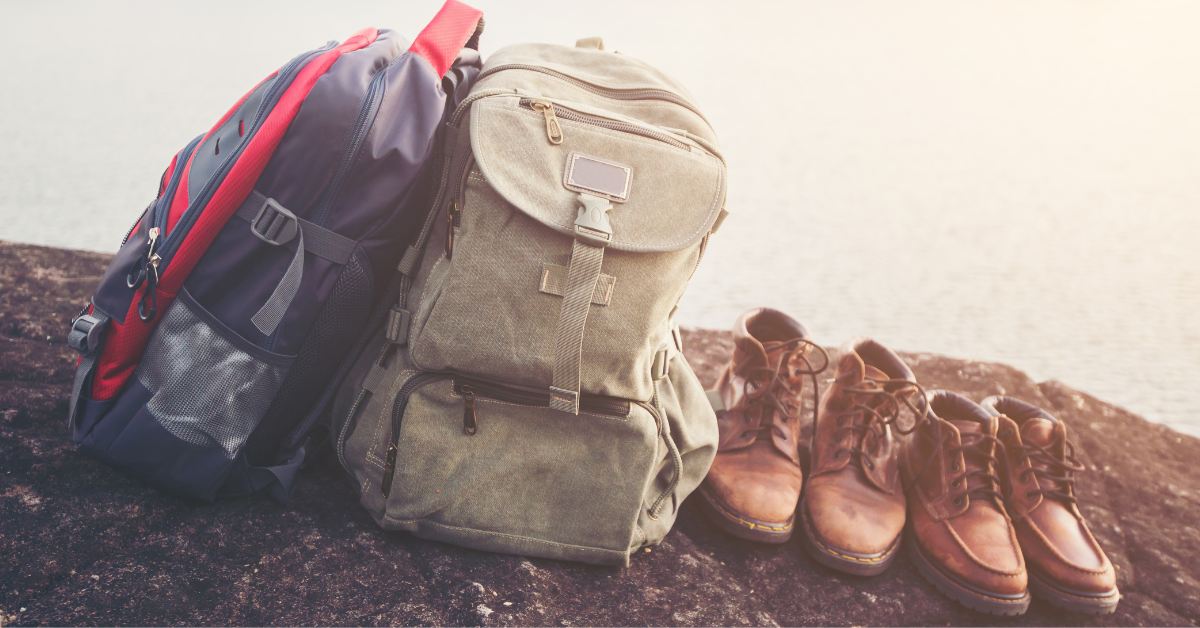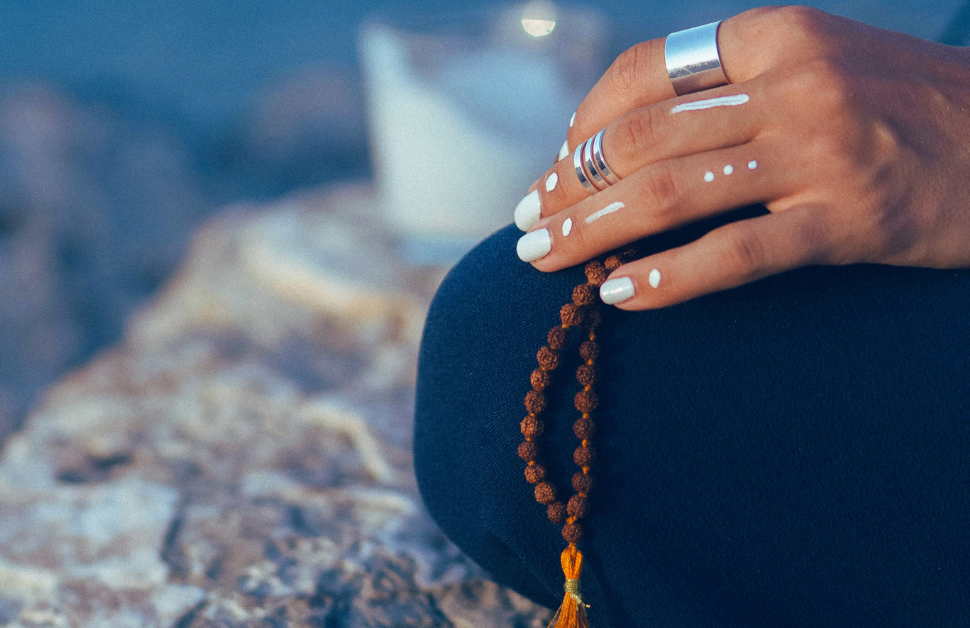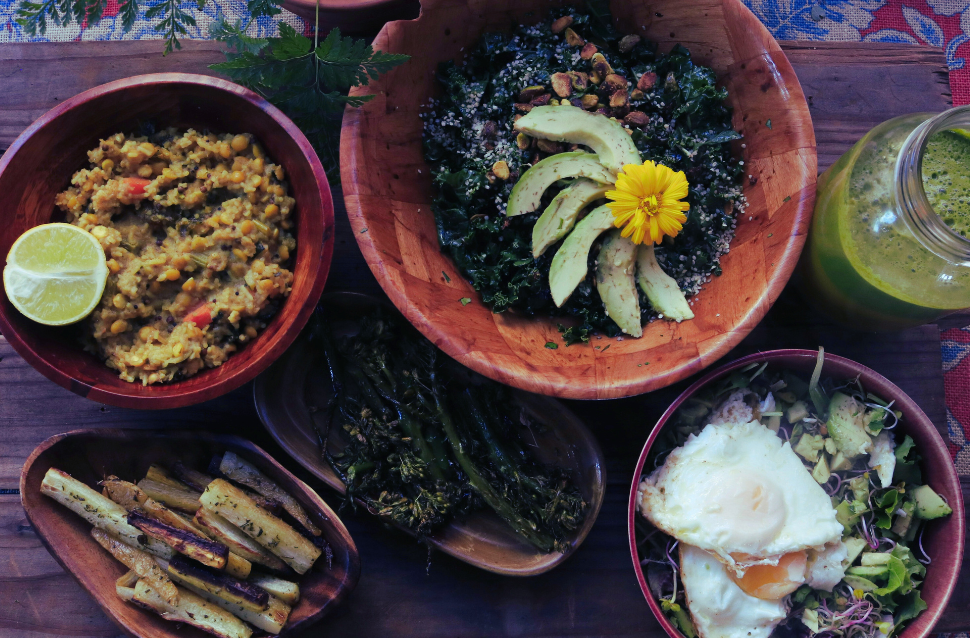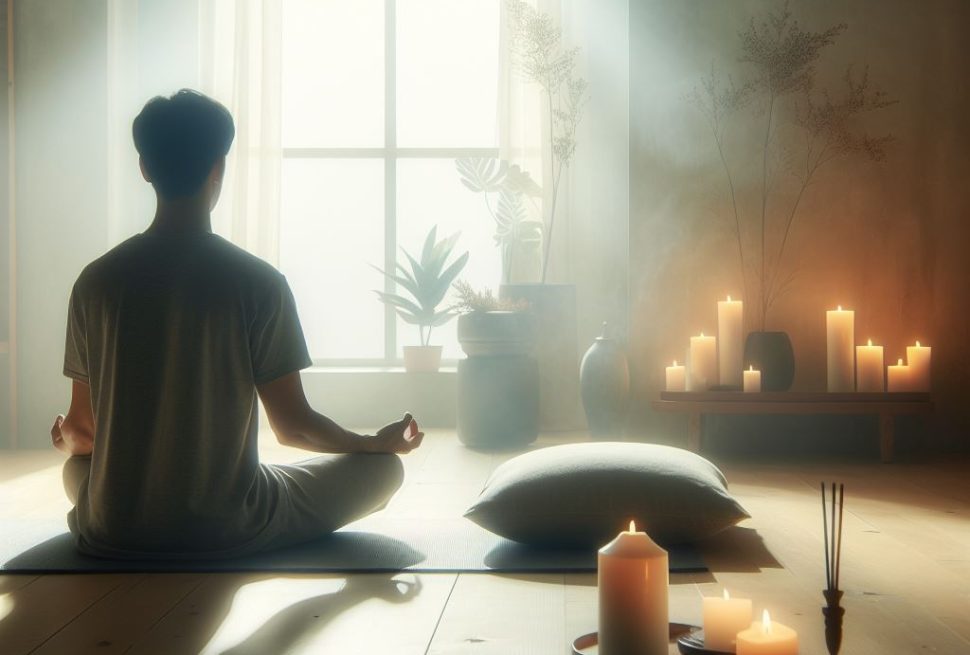There are times when we make a decision to go somewhere and forget to take into consideration the necessary clothes and essentials for the trip and end up having a slight discomfort during the journey.
To avoid this from happening during a Yoga Trek we, the team of manasukh have created a list of packing guide for yoga trek in order to enhance your Yoga Trekking experience without any uneasiness.
Learn how to balance your load while taking into consideration, you have all the necessities for physical challenges and mindful practices on the journey. Let’s dive into the essentials that will make your yoga trekking journey both comfortable and enlightening.
Lightweight Camping Gear: The Foundation of Your Trek
When it comes to yoga trekking, every ounce counts. Your camping gear should be as light as possible without compromising on comfort and functionality. Here’s what you need:
Ultralight Tent:
Opt for a 3-season tent that weighs under 4 pounds. Look for models with good ventilation and a small vestibule for gear storage.
Sleeping Bag:
Choose a mummy-style bag rated for the expected temperatures. Down-filled bags offer the best warmth-to-weight ratio.
Sleeping Pad:
A compact, inflatable sleeping pad provides insulation and comfort without adding bulk to your pack.
Backpack:
Invest in a well-fitting, 50-65 liter backpack with proper weight distribution and ventilation. Remember, the key is to find a balance between comfort and weight. Each item should earn its place in your pack by serving multiple purposes or being absolutely essential.
Versatile Trekking Clothing: Dress for Success
Your clothing choices can make or break your yoga trekking experience. Focus on versatile, moisture-wicking, and quick-drying pieces that can be layered. In addition to this packing guide, here’s a basic list to get you started:
Base Layers:
Pack 2-3 sets of moisture-wicking underwear and sports bras.
Hiking Pants:
Bring 1-2 pairs of convertible pants that can transform into shorts.
Shirts:
Pack 2-3 lightweight, long-sleeved shirts for sun protection and layering.
Insulation Layer:
A fleece jacket or a lightweight down jacket for cooler temperatures.
Rain Jacket:
A breathable, waterproof outer layer is essential for unexpected showers.
Hiking Socks:
3-4 pairs of moisture-wicking socks to prevent blisters.
Hiking Boots:
Well-broken-in, waterproof boots with good ankle support.
Camp Shoes:
Light sandals or slip-ons for wearing around camp.
Compact Yoga Equipment: Bringing Your Practice to Nature
One of the joys of yoga trekking is practicing in stunning outdoor settings. To make this possible, you’ll need to pack some essential yoga gear that’s compact and lightweight:
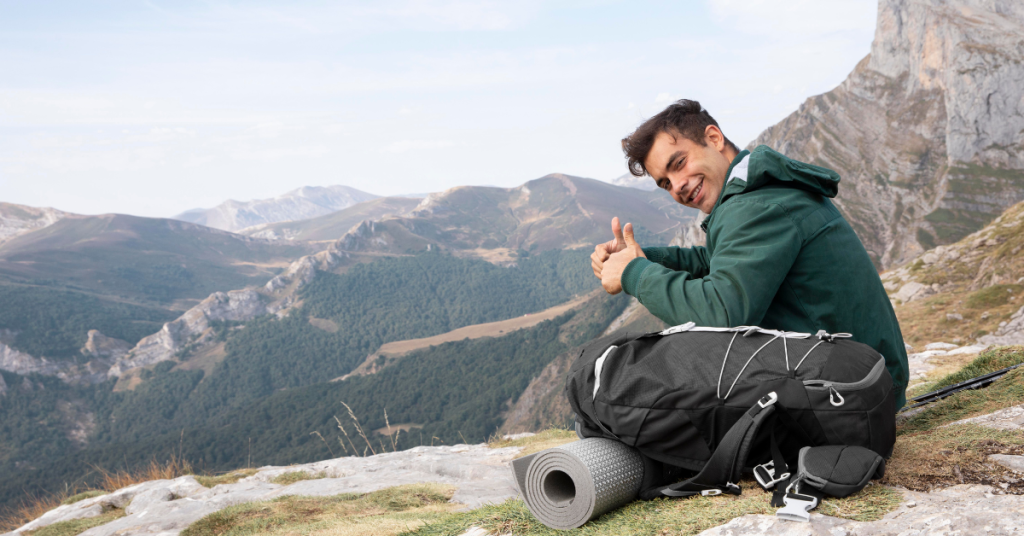
Yoga Mat:
Invest in a thin, foldable travel yoga mat or a lightweight cork mat.
Yoga Strap:
A versatile tool for stretching and assisting in poses.
Yoga Blocks:
Inflatable yoga blocks are an excellent lightweight alternative to traditional foam blocks.
Meditation Cushion:
A small, inflatable cushion can double as a pillow at night.
Remember, the goal is to maintain your practice without overloading your pack. Get creative with your surroundings – use a smooth rock as a yoga block or a soft patch of grass as your mat.
Eco-Friendly Trekking Supplies: Leave No Trace
At Manasukh, we believe in responsible travel. This packing guide for yoga trek includes eco-friendly items to minimize your impact on the environment:
Reusable Water Bottle:
A durable, BPA-free bottle with a wide mouth for easy filling and cleaning.
Water Purification System:
Tablets, drops, or a lightweight filter to ensure safe drinking water.
Biodegradable Soap:
Multi-purpose soap for body, clothes, and dishes.
Reusable Food Containers:
Collapsible silicone containers for storing snacks and meals.
Bamboo Utensils:
A lightweight, eco-friendly alternative to plastic cutlery.
Solar Charger:
Harness the sun’s energy to keep your devices powered up.
By choosing environmentally friendly gear, you’re not only reducing your carbon footprint but also deepening your connection with nature – a key aspect of yoga trekking.
Hiking Meditation Tools: Cultivate Mindfulness on the Trail
Yoga trekking isn’t just about physical movement; it’s also an opportunity for deep introspection and meditation. Following our packing guide, Pack these lightweight tools to enhance your mindfulness practice:
Meditation Beads:
A small mala or set of prayer beads can guide your meditations.
Mindfulness Journal:
A compact notebook and pen for reflections and gratitude practices.
Portable Speaker:
A small, waterproof speaker for guided meditations or soothing nature sounds.
Essential Oils:
Travel-sized bottles of calming scents like lavender or peppermint.
These items will help you maintain your mindfulness practice even in the most remote locations, allowing you to fully embrace the yoga trekking experience.
Nutritious Trail Snacks: Fuel Your Journey
Proper nutrition is crucial for maintaining energy levels during your yoga trekking adventure. Pack a variety of nutrient-dense, lightweight snacks:
Nuts and Seeds:
Almonds, walnuts, and pumpkin seeds provide healthy fats and protein.
Dried Fruits:
Raisins, apricots, and goji berries offer quick energy and essential vitamins.
Energy Bars:
Look for bars with whole food ingredients and minimal added sugars.
Nut Butter Packets:
Single-serve packets of almond or peanut butter for protein and healthy fats.
Electrolyte Powders:
To replenish minerals lost through sweat during your trek.
“Remember to pack enough food for your entire journey, plus a little extra for emergencies. Choose foods that you enjoy eating, as your appetite might fluctuate at higher altitudes.”
Weather-Appropriate Layers: Be Prepared for Any Condition
Yoga trekking often involves traveling through diverse terrains and microclimates and for a packing guide, Layering is key to staying comfortable in changing weather conditions:
Base Layer:
Moisture-wicking synthetic or merino wool tops and bottoms.
Mid Layer:
Fleece or lightweight down jacket for insulation.
Outer Layer:
Waterproof and breathable shell jacket and pants.
- Accessories:
- Sun hat or cap for protection during daytime treks
- Warm beanie for cold evenings
- Lightweight gloves
- Neck gaiter or buff for versatile protection
Remember, it’s better to have slightly more layers than you think you’ll need. Mountain weather can be unpredictable, and you’ll appreciate the extra warmth when practicing yoga at sunrise or meditating under the stars.
Essential Toiletries and First Aid: Stay Clean and Safe
Maintaining hygiene and being prepared for minor injuries is crucial during your yoga trekking adventure. Pack these compact yet essential items:
Toiletries:
- Biodegradable wet wipes
- Travel-size toothbrush and toothpaste
- Multipurpose soap (for body and clothes)
- Sunscreen (SPF 30 or higher)
- Lip balm with SPF
- Hand sanitizer
First Aid Kit:
- Adhesive bandages in various sizes
- Antibiotic ointment
- Pain relievers (e.g., ibuprofen)
- Blister treatment pads
- Insect repellent
- Any personal medications
While packing light is important, never compromise on these essentials. A well-stocked first aid kit can make a significant difference in your comfort and safety during the trek.
However, while traveling with an agency, things such as first aid kits, emergency pills, sanitizers and toiletries are managed by the travel agency themselves. You can contact your chosen travel agency and consult beforehand too.
Navigation and Communication Tools: Stay on Track
Even if you’re traveling with a guide, it’s wise to have your own navigation tools:
Map and Compass:
While travel agencies typically provide a physical map of the area and an introductory session on how to use it during your pre-trip briefing, it’s always a good idea to additionally put in some effort to learn map-reading skills yourself. This serves as a valuable precaution in case of unforeseen circumstances.
GPS Device:
A handheld GPS or a smartphone with offline maps can be invaluable.
Headlamp:
Essential for early morning practices or nighttime navigation.
Whistle:
For signaling in case of emergency. These are too included on the package offered by most of the travel agency companies.
Power Bank:
To keep your devices charged throughout the journey. In Nepal’s trekking route such as Annapurna region, Everest region, Rara, and other remote places mostly, only tea houses offer the service for charging on extra cost. You can carry a power bank for your smartphone device or cameras for your personal purpose.
Power banks are expensive usually and getting one for every participant makes it expensive for the travel agency and so, power banks are not included in the service provided by us. However, during an emergency, the guide can be there for providing you theirs by chance your powerbank gets into any trouble.
Remember, technology can fail, so always have a backup plan and know how to navigate using traditional methods.
Yoga Props for Outdoor Practice: Enhance Your Experience
While minimalism is key in yoga trekking, a few small props can greatly enhance your practice:
Travel Yoga Towel:
A lightweight, quick-drying towel that can double as a yoga mat.
Resistance Bands:
Versatile for both yoga practice and muscle recovery after long treks.
Tennis Ball:
Great for self-massage and releasing tight muscles.
Eye Mask:
Useful for meditation and ensuring quality sleep in bright environments.
These small additions to your pack can make a big difference in your yoga practice, helping you stay flexible and recover faster from challenging treks.
Minimalist Packing Tips: Mastering the Art of Less
Now that we’ve covered the essentials, let’s discuss how to pack efficiently for your yoga trekking adventure:
Roll, Don’t Fold:
Rolling your clothes saves space and reduces wrinkles.
Use Packing Cubes:
These help organize your gear and compress your items.
Wear Your Bulkiest Items:
Travel in your hiking boots and wear your heaviest layers.
Multi-Use Items:
Prioritize gear that serves multiple purposes, like a sarong that can be a towel, skirt, or shawl.
Leave Room for Souvenirs:
Pack only 80% of your backpack’s capacity to leave space for mementos. It’s like the Japanese proverb: Hara Hachi Bu which translates in english as: eat 80% full for a healthy body. Likewise, for enhanced healthy travel, pack only 80% of your backpack.
Remember, every ounce counts when you’re carrying your world on your back. Be ruthless in your packing decisions – if you’re unsure about an item, leave it behind.
Sustainable Trekking Practices: Honoring the Environment
At Manasukh, we believe that yoga trekking is not just about personal growth, but also about respecting and preserving the natural world. Here are some sustainable practices to keep in mind:
Leave No Trace:
Pack out all trash, including biodegradable items.
Stick to Trails:
Avoid damaging vegetation by staying on designated paths.
Respect Wildlife:
Observe animals from a distance and never feed them.
Minimize Campfire Impact:
Use a camping stove instead of open fires when possible.
Be Water-Wise:
Use biodegradable soap and wash at least 200 feet away from water sources.
These are not exactly the equipments included in the packing guide but more of a moral and human thing to be prepared for during a yoga trek. By following these principles, you’re not only protecting the environment but also deepening your connection with nature – a crucial aspect of yoga trekking.
Mental Preparation: Setting Intentions for Your Journey
Packing for yoga trekking isn’t just about physical items – it’s also about preparing your mind for the journey ahead. Here are some tips:
Set Intentions:
Define what you hope to gain from this experience. You can consult with the travel agency of your choice and tell them about your expectation from the journey, they can certainly help you have a clarity on what can be achievable.
Practice Mindfulness:
Start a daily meditation practice before your trip. A Yoga Trek is generally designed to best suit anyone who loves yoga and practices it. So, it’s good to practice some yoga poses before the trip but the yoga instructor can start from the very beginning as not everyone can adapt it quickly by practicing few times only.
Build Physical Stamina:
Trekking takes up a huge amount of energy and breaths of the participant. It is recommended to build the stamina by running, walking, by doing calisthenics or going to the gym. This may gradually increase your yoga trek experience.
Learn About Local Culture:
Research the areas you’ll be visiting. The guide can elaborate you about the local cultures, history, language and all the information and legends and stories related with the land. However, by learning about local culture and history, you can be pre informed about greeting practices.
Remember, the most important thing you can pack is an open mind, a healthy heart and a positive attitude.
Tech-Savvy Trekking: Balancing Connectivity and Disconnection
While yoga trekking is often about disconnecting from the digital world, some tech can enhance your experience:
Smartphone Apps:
Download offline maps, star-gazing apps, and bird identification guides.
Fitness Tracker:
Monitor your steps, elevation gain, and heart rate.
E-Reader:
Load it with inspirational books and yoga texts for evening reading. I like to read myself, and it’s been on my wishlist to read the book “The Good Earth” looking at the Himalayas which can seem pretty boring for the people around but really a heartwarming experience for me. You can download your favorite book or bring the actual book and devour it, sensing it’s pages, smell, while having the greatest views on the planet just ahead of you. This can be a great thing and can be recommended for other people when they ask for a packing guide from you too.
Portable Solar Panel:
For longer treks, this can keep your devices charged.
Use technology mindfully to enhance your connection with nature rather than getting distracted from it.
Seasonal Considerations: Adapting Your Pack for Different Climates
Yoga trekking can be enjoyed year-round, but your packing list should adapt to the season:
Spring:
- Pack for unpredictable weather with extra layers. For example: there can be extreme wind and normal weather in Mustang at the same time. So you can carry a wind cheater and nice goggles to be safe from the wind and dust and keep them away when the wind is gone.
- Include allergy medication if needed. You can prepare it yourself or you can consult the travel agency you have booked, and give them a description of your needs.
- Bring gear for potential mud or light snow.
Summer:
- Focus on sun protection (hat, sunglasses, high SPF sunscreen)
- Pack lightweight, breathable clothing
- Include extra water capacity and electrolyte supplements
Fall:
- Prepare for cooler temperatures, especially at night
- Pack warmer sleeping bag and extra layers
- Include gear for potential early snow
Winter:
- Invest in high-quality insulation layers
- Pack winter-specific gear (crampons, ice axe if necessary)
- Include hand and foot warmers for comfort during yoga practice
Regardless of the season, always check local weather forecasts and consult with experienced guides before finalizing your packing list. This is only a packing guide, you can check weather via different sources in order to be up to date with the weather condition in your desired destination.
Group Dynamics: Sharing the Load
If you’re trekking with a group, consider how you can distribute shared items:
Cooking Gear:
Split up stove, fuel, and cookware among group members.
First Aid:
Divide first aid supplies to create multiple smaller kits.
Shelter:
Share tent components (e.g., one person carries poles, another the fly).
Yoga Equipment:
Distribute props and mats among the group.
Sharing gear not only lightens individual loads but also fosters a sense of community – a key aspect of the yoga trekking experience.
While traveling with an agency such as ours, we have porters to carry your baggage with limited luggage weight up to 15-20kgs. And cooking gear, first aid kit, shelter, they are managed by the travel guide team themselves.
Post-Trek Recovery: Packing for After the Adventure
Don’t forget to prepare for your return:
Clean Clothes:
Pack a set of fresh clothes to change into after your trek
Recovery Snacks:
Include easily digestible, nutrient-rich foods for immediate post-trek nourishment
Compression Socks:
These can aid in recovery during your journey home
Journal:
Bring a special notebook to record your experiences and insights. Taking notes of your feelings and keeping track of your thoughts and ideas can be beneficial for artistic purposes or just for self-growth. Journaling does help in multiple ways.
Having these items ready can make your transition back to “regular life” smoother and more comfortable.
The Art of Unpacking: Maximizing Your Yoga Trekking Experience
As you prepare for your journey, remember that packing (and unpacking) is an opportunity for mindfulness:
Pack with Intention:
As you place each item in your bag, consider its purpose and value.
Practice Gratitude:
Appreciate the gear that will support your journey.
Embrace Simplicity:
Notice how little you truly need to be comfortable and fulfilled.
Unpack Mindfully:
Upon return, reflect on each item’s role in your adventure. You can make a checklist while packing and review it during unpacking to not miss anything.
By following this packing guide and approaching packing as a mindful practice during a yoga trek, you’re setting the tone for a transformative yoga trekking experience.
Conclusion
Yoga trekking offers a unique blend of physical challenge, spiritual growth, and connection with nature. By following this comprehensive packing guide for yoga trek, you’ll be well-prepared for an unforgettable journey that nourishes body, mind, and soul.
At manasukh, we’re passionate about creating an unforgettable travel experiences. Our yoga trekking adventures are carefully crafted to balance exhilarating hikes with refreshing yoga practices, all while taking you in breathtaking natural landscapes. This blog was dedicated to the packing guide you can follow during the yoga trek.
Remember, the key to successful yoga trekking lies not just in what you pack, but in the mindset you bring. Pack light, stay open to new experiences, and prepare to be transformed by the power of combining yoga with the great outdoors.
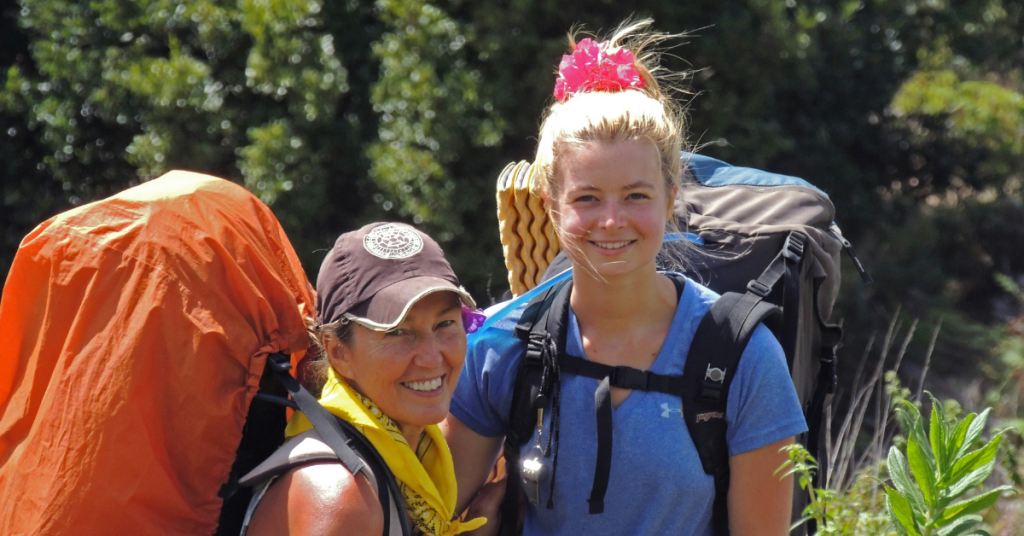
Are you ready to embark on your yoga trekking adventure? Contact us to learn about our upcoming trips and start planning your mindful journey into nature’s embrace. Let’s explore, practice, and grow together in Nepal’s most inspiring destinations.

